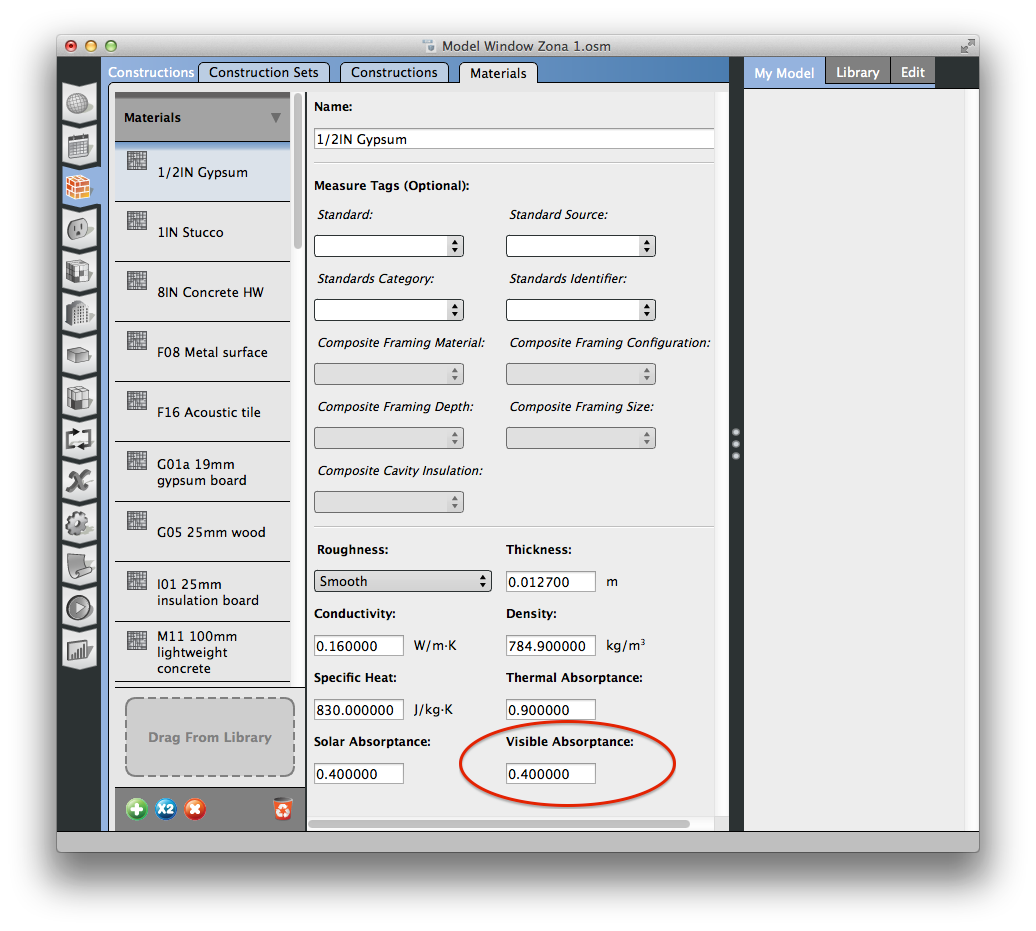First time here? Check out the Help page!
 | 1 | initial version |
If using Radiance directly, the simplest method is to use a plastic material, and equal RGB values to define a grey material of n reflectance, definition e.g.:
void plastic my_60%_reflective_material
0 0 5
0.6 0.6 0.6 0 0
If using OpenStudio, you'd make a material whose absorptance is the inverse of the reflectance you desire, and place that on the innermost layer of your construction. This will be translated to a similar plastic material definition in the corresponding Radiance model, when you run the Radiance measure in OpenStudio.
These are pretty generic responses. If you provide more detail (what program are you using, what's the goal of the simulation (pretty pictures versus good data, etc.)) we can probably provide more details.
 | 2 | No.2 Revision |
If (updated 2016.07.26)
It is absolutely possible to change the reflectance of the room surfaces in your OpenStudio model. This is explained in the second 'graph, below.
Again, if using Radiance directly, the simplest method is to use a plastic material, and equal RGB values to define a grey material of n reflectance, definition e.g.:
void plastic my_60%_reflective_material
0 0 5
0.6 0.6 0.6 0 0
If As you state you are using OpenStudio, then you'd want to make a an opaque material whose absorptance is the inverse of the reflectance you desire, and place that on the innermost layer of your construction. This (This will be translated to a similar plastic material definition in the corresponding Radiance model, when you run the Radiance measure in OpenStudio.
These OpenStudio.)
The safest thing to do would be to locate the material(s) you are pretty generic responses. already using for your interior room surfaces and modify their absorptances to get you the reflectance you want. The screenshot below shows the material properties for 1/2" Gypsum, from your model (thanks for posting that); it's got a Visible Absorptance of 0.40 (see lower right), meaning it's a 60% reflective material, in the visible spectrum. If you provide more detail (what program are you using, what's the goal of the simulation (pretty pictures versus good data, etc.)) we change this value to the inverse of whatever you want for visible reflectance, you're all set. You can probably provide more details.
Now, as for the shape of the floor plan: it's non-convex. This is problematic both for EnergyPlus (shading calculations), and unfortunately for Radiance as well, at least in the OpenStudio / Radiance implementation. The illuminance maps, which you will use for your daylight evaluation, must be rectangular; OpenStudio does not (easily) support arbitrarily shaped lighting calculation grids. You will not be able to cover the entire area of your floor plan with uniformly arrayed calculation points. You can either place illuminance maps to cover what you can and evaluate relative changes in your designs, but obviously, the daylight metrics will not be spatially representative.
Hope this helps!

